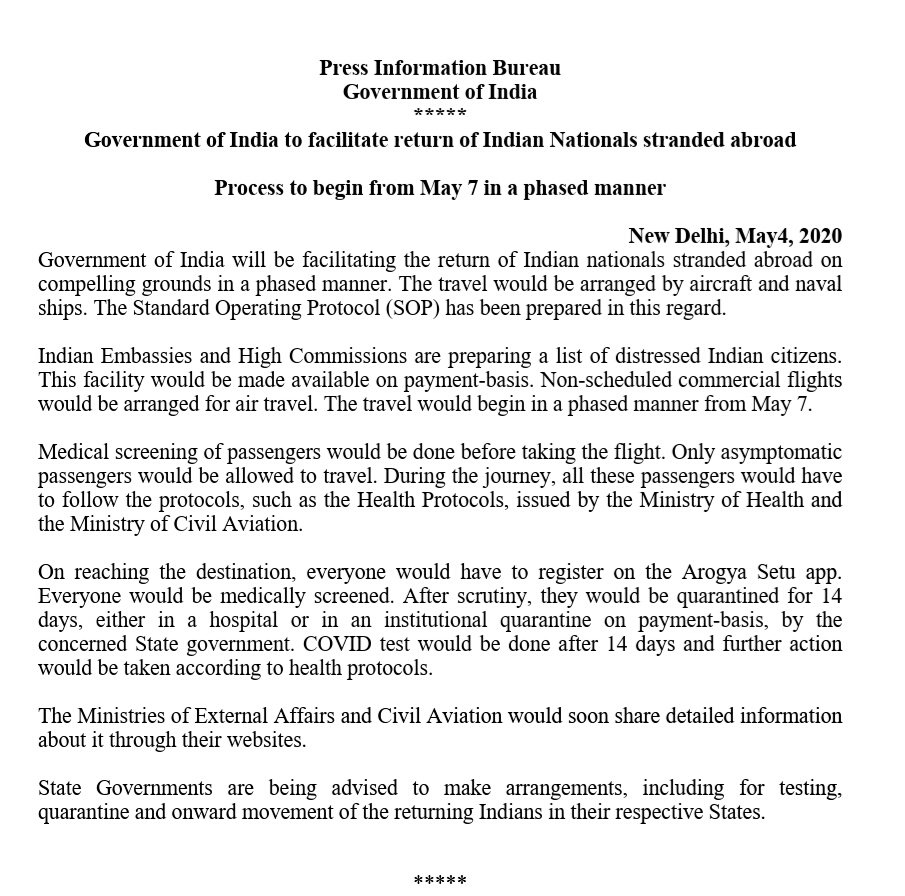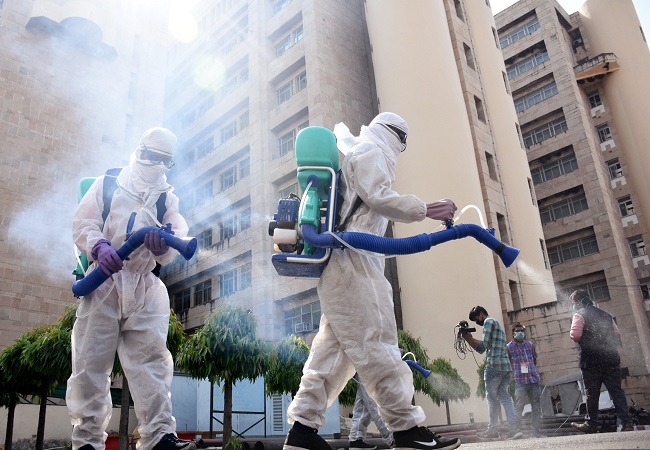New Delhi: The government has planned to bring back 14,000 Indians stranded in more than 10 countries, over seven days in 64 flights.
This will be largest overseas evacuation of stranded Indian nationals abroad since Independence. The operation to bring back Indians stranded in various countries due to airspace closures because of the COVID-19 pandemic will commence in a phased manner, the first phase to begin as early as this week.

The repatriation exercise will begin on May 7. On an average, about 2,000 Indians will be flown back each of the days.
Due to limited number of flights, priority will be given to carry people who are in the most vulnerable categories such as elderly people, pregnant women, people with medical emergencies or those who have lost near & dear ones in India, sources said.
The Ministry of External Affairs (MEA) has prepared a chart for the evacuation of over 14,000 Indian nationals stranded in 13 foreign countries by 64 flights in week 1 of the operation.
 According to the MEA plan shared with the Ministry of Civil Aviation (MoCA) that is set to begin from May 7, an approximate 14,800 passengers will be evacuated from 13 different countries. Flights from India will fly to the Philippines, Singapore, Bangladesh, UAE, UK, Saudi Arabia, Qatar, Singapore, Phillippines, USA, Oman, Bahrain and Kuwait. The first day of evacuation will see 10 flights repatriate 2300 Indians.
According to the MEA plan shared with the Ministry of Civil Aviation (MoCA) that is set to begin from May 7, an approximate 14,800 passengers will be evacuated from 13 different countries. Flights from India will fly to the Philippines, Singapore, Bangladesh, UAE, UK, Saudi Arabia, Qatar, Singapore, Phillippines, USA, Oman, Bahrain and Kuwait. The first day of evacuation will see 10 flights repatriate 2300 Indians.

On Day 2, around 2050 Indian nationals will arrive in Chennai, Kochi, Mumbai, Ahmedabad, Bengaluru and Delhi from nine different countries, according to the plan.
Similarly on Day 3, some 2050 stranded nationals are expected to arrive in Mumbai, Kochi, Lucknow and Delhi from 13 countries spread across the Middle East, Europe, South East Asia and USA.
On Day 4 of the plan, the aviation ministry in collaboration with the MEA will evacuate 1850 stranded nationals from eight different countries, including the USA, UK and the UAE.
Prior to boarding the evacuation flights, all persons coming to India are required to fill-up a form and submit a copy each to the Health and Immigration Counter at arrival. The passengers are required to state whether they are suffering from fever, cough, diabetes or any respiratory disease. This form is similar to the one filled by passengers arriving back into the country during the early days of the COVID-19 outbreak.

The government’s official guidelines say all passengers will be screened before they are allowed to board flights for their return, and only asymptomatic passengers would be allowed to travel. During the journey, they will have to follow the protocols such as those issued by the Health Ministry and the Civil Aviation Ministry.
This airlift by the MEA would be the largest since the Persian Gulf War evacuation of over 170,000 people from Kuwait in 1990. Similar evacuations were also seen in April 2015, when Operation Raahat was launched to evacuate Indians from war-torn Yemen.
(with ANI inputs)




